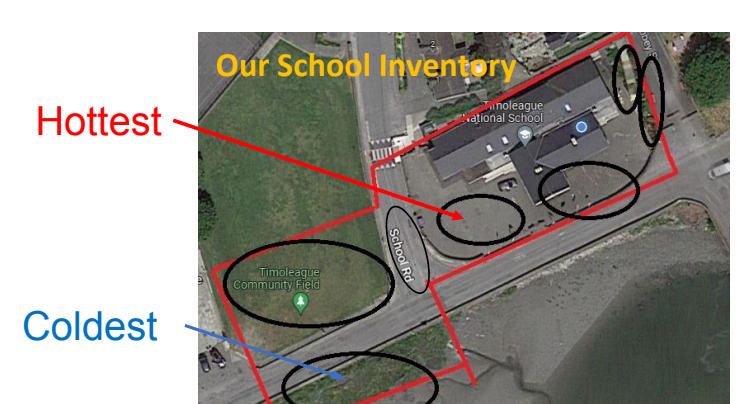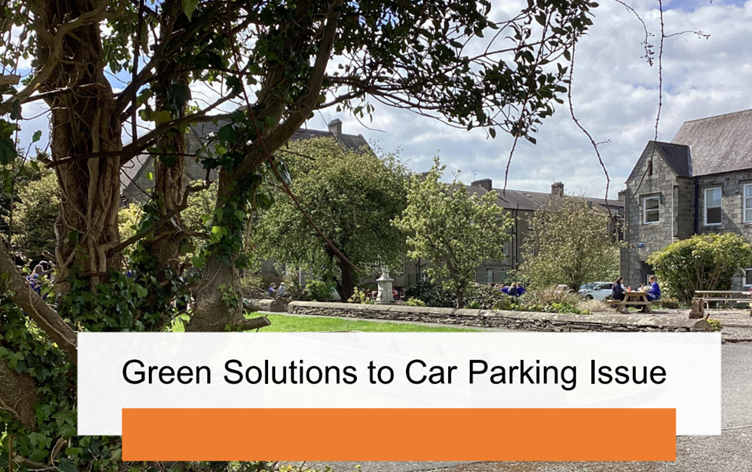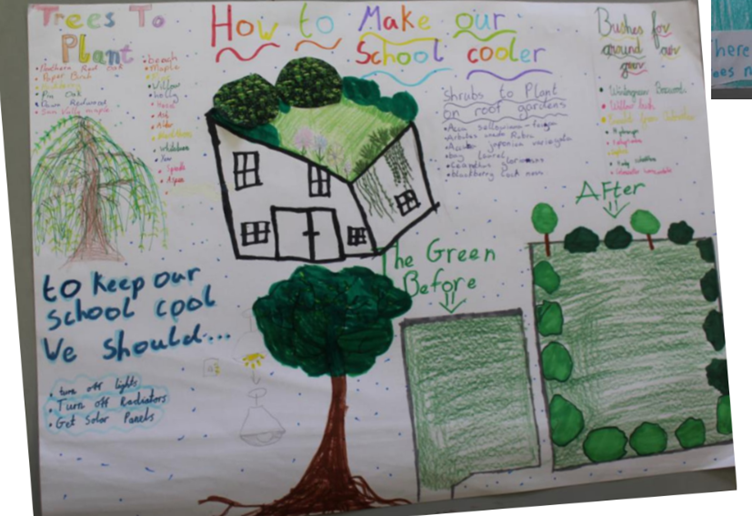Surface Temperature, Land Cover, and Heat-Risk Resilience - Ireland
How Cool is Your School?
Land Cover, Surface Temperature, and Heat-Risk Resilience
Project Dates: March-April 2024
Surface Temperature measurement dates: March 5th-22nd
- Measure surface temperature & submit data to GLOBE
- Try your hand at using the GLOBE Observer App for Cloud Observations
- Map land cover surrounding your school
- Create a heatwave risk map
- Design a heatwave-resilient ‘cool’ school proposal
- Present findings and get expert recommendations. Create a plan to implement your chosen nature-based solution on school grounds!

The Project Resource Guide contains project key details, 5 lesson plans, 5 hands-on activities, a video resource library, project templates, and more! Make sure you take a close look at your resource guide below!
Primary Level Resource Guide: Download here
Second Level Resource Guide: Download Here
Surface Temperature Observation Poster: Download here
Nature-based Urban Cooling Solutions Poster: Download here
Nature-based Urban Cooling Solutions Poster: Download here
- Measure Surface Temperature and Complete a Cloud Observation on the 5 Study Dates above if possible. If the dates don't suit you, choose any 5 days in March to collect your data. Learn how in your resource guides above.
- On your study dates record your surface temperature results on:
- Make sure you record 9 measurements of each surface type and write all 9 on your worksheet or directly on your school's Excel file so you can submit the data to GLOBE at a later date.
- Dr. Ned Dwyer: Why Heat Matters and How We Can Adapt.
- Watch here: https://youtu.be/sVVkX9x-3a0 (9min)
- Linda Hughes: Met Eireann, Heatwaves in Ireland and Irish Temperature Trends.
- Watch here: https://youtu.be/wBOXTnveKIk (9min)
- Dr John Sweeney: Urban Heat Islands and Nature-Based Solutions.
- Watch here: https://youtu.be/9W_Vap6LE1Y (12min)
Need a surface temperature, climate resilience, or nature-based solutions refresher?
- Have a look through the Project Teacher Training PowerPoint: Download here.
- Did you miss the teacher Information session webinar? Watch it here
-
Watch 5min quick cloud understanding video here: GLOBE Cloud Science (youtube.com)
-
Watch 5min clouds and surface temperature animation here: NASA's Earth Minute: Cloudy Forecast - YouTube
-
Watch 45min GLOBE Ireland Cloud Teacher Training video here: GLOBE Ireland - Teacher Training on Clouds - YouTube
-
More resources and help on how to observe clouds: Cloud Tips - Taking Clouds Observations - GLOBE Observer - GLOBE.gov
1) How do we choose our study site?
See the study selection and reporting guidance here.
2) We missed one of the official study dates, what do we do?
No worries, as just choose another day in March to substitute the day with. As long as you collect data 5 days in March you are participating in the project.3) What do we do if we forget to bring the Observer App to the field for data collection one of the days?
You can report your surface temperature data retroactively using the GLOBE Observer Browser. See here. You just need to know the length and width of your study sites, and the coordinates of the study site. Don't forget to keep a record of all nine measurements of each surface. See here how to submit data on the GLOBE Observer Browser.4) How do we make our surface temperature graph?
Click here to go to your school folder. Open the folder with your school's name. Open your Excel file. Click on the second tab and write in your average measurements into the corresponding surface area. The graph will be generated automatically.5) If we are not using the Observer App, how do we report our cloud observations?
Use the Study Date Data collection worksheet and fill in your cloud observation sheet. Take a photo of it and upload it to your school folder.6) How do we submit our data to GLOBE?
See here how to submit data on the GLOBE Observer Browser.
A paragraph is a self-contained unit of a discourse in writing dealing with a particular point or idea. Paragraphs are usually an expected part of formal writing, used to organize longer prose.
The How Cool is Your School Project 2024 Assessment Criteria:
- Science:
- Follows the scientific method of inquiry, problem, observation, logical solutions drawn. Surface temperature is measured regularly at the same time, and cloud observations are made simultaneously. SCORE: 1-3
- Students compare with local, international, or national temperature trends: SCORE: 1-3
- Includes a Land cover Assessment. SCORE: 1-3
- Communication & Community:
- Project has 1-3 evidence-based calls to action. SCORE: 1-3
- School community engagement/project communication plans are made. SCORE: 1-3
- Project has a clear call to action developed in an engaging format (blog/ video/ art / music / presentation): Score: 1-3
- Action & Nature-based solutions designs:
- Site Inventory Map is easily legible, and there is an indication of grey vs. green space. Score: 1-3
- The plan has clear environmental, social, biodiversity, or climate resilience-based benefits. Score: 1-3
- The plan has an ideal aim and a staged timeline proposal. Score: 1-3
- The plan has a realistic evaluation of possible challenges/opportunities for implementation- e.g. A SWOT analysis (strengths, weaknesses, opportunities, threats). Score: 1-3
Overall, Junior Project Winners 2024:
Overall Senior Project Winners 2024:
- Scoil Mhuire, Cork City. View here
- St Brigid’s Presentation Secondary School, Kerry. View video here. & View presentation here.
- Killarney Community College. View here
- Mercy Mouthawk, Kerry. View here.
- Gort Community School: View video here
Junior Winners:
- St. Finian’s National School, Meath – Junior GLOBE winners 2023: https://youtu.be/xphkDOhlZSY
-
Best written project- Bearings National School, 2023 :Click here to read
Senior Winners:
-
Mt. St. Michaels Secondary School – Cloud & surface temperature article: Read here
-
Mt. St. Michaels Secondary School- Is our Planet Drying Out Study: Click here to read
-
St. Vincents Secondary School, Dundaulk Presentation: See here
-
Coláiste Íosagáin's 'Green Green Earth' Song Submittion- Best Artistic Winner 2023: See here
If you have any questions, please email us at globe@eeu.antaisce.org
You can also follow along on our social media accounts @GLOBEIreland on Twitter, Instagram, and Facebook!
You can also follow along on our social media accounts @GLOBEIreland on Twitter, Instagram, and Facebook!





